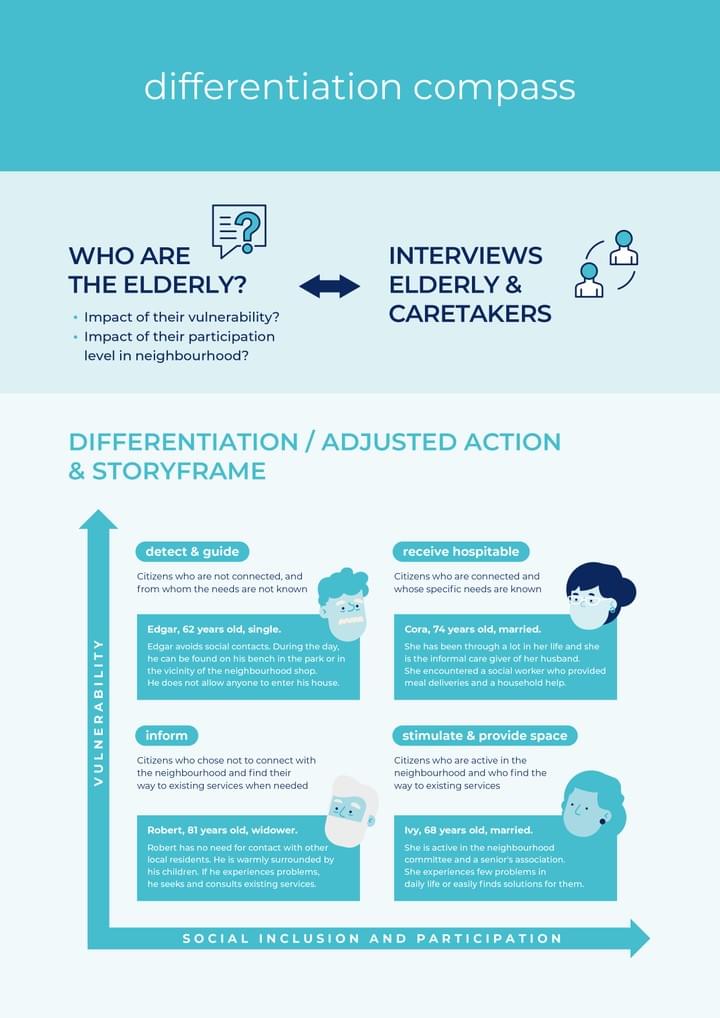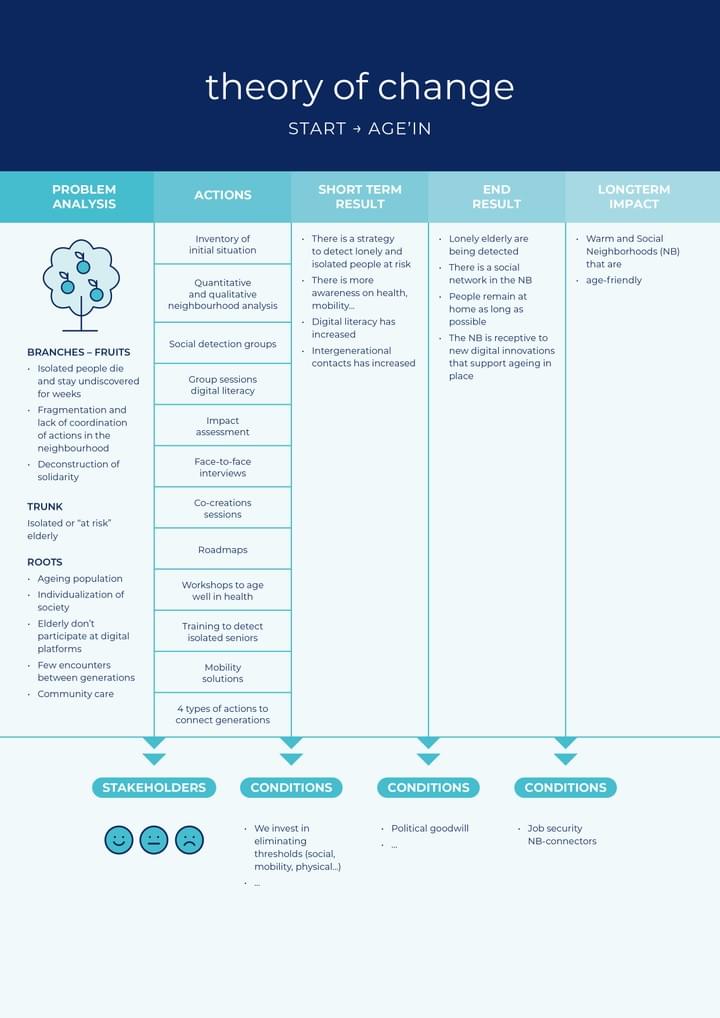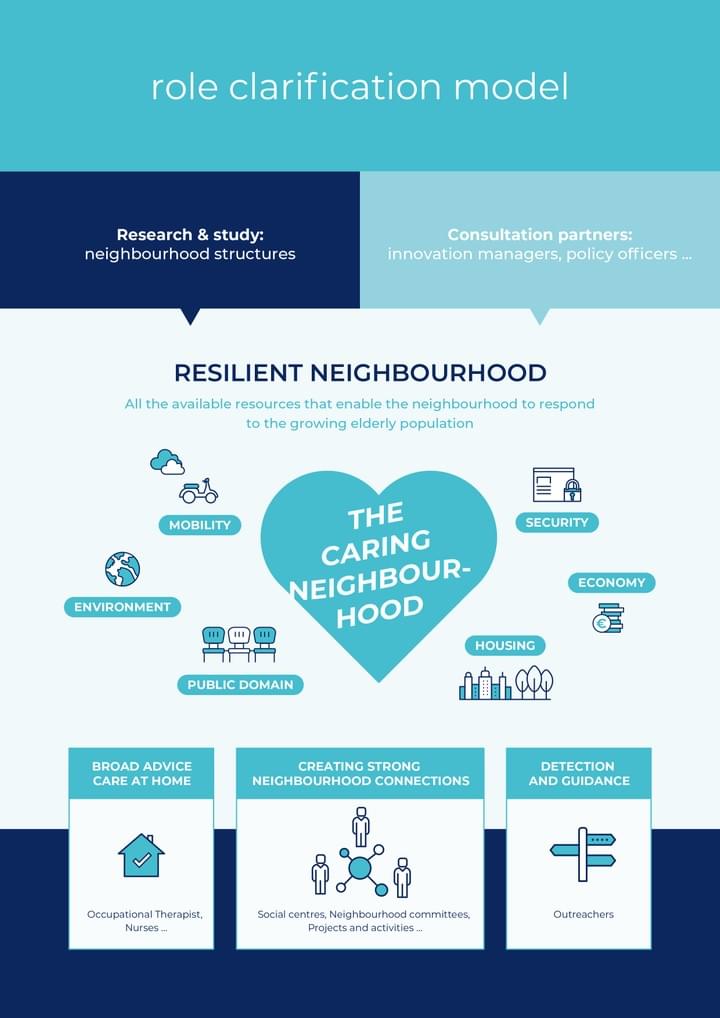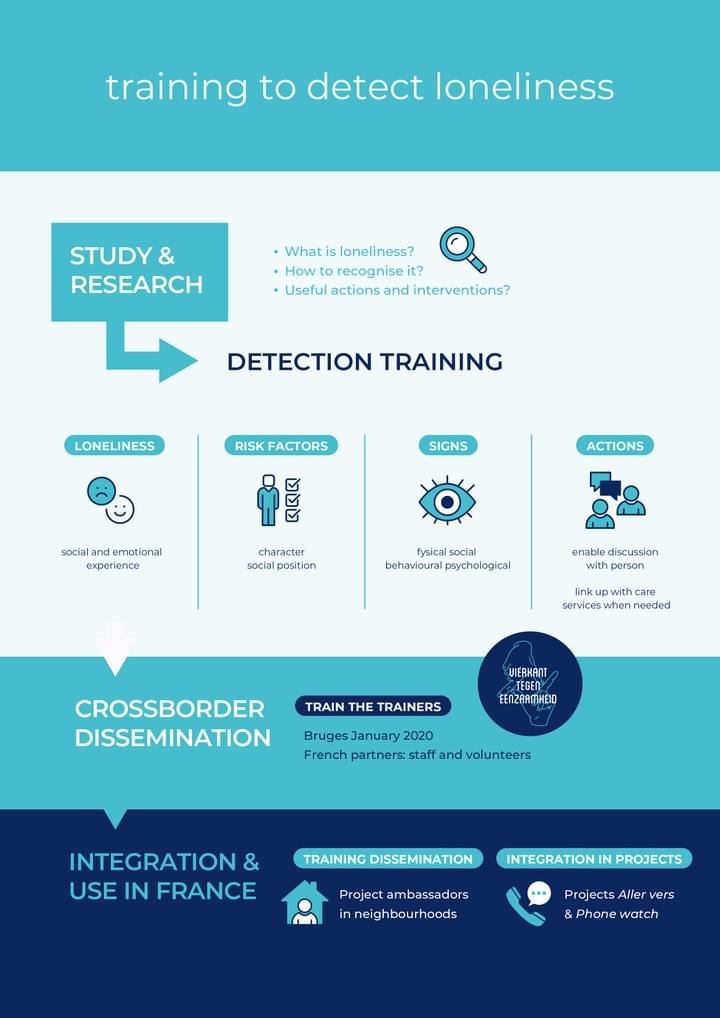
AGE'IN
- Key documents
- …
- Key documents
AGE'IN
- Key documents
- …
- Key documents
AGE'IN
Isolated seniors detection
Joined strategy to detect isolated seniors

DIFFERENTIATION COMPASS
HOW TO USE IT? WHY USE IT?
Within the AGE’IN project, all project partners faced the same questions: who are the vulnerable elderly who are confronted with loneliness? What’s the impact of their vulnerability, what’s the impact of the level of participation in their neighbourhood? To find answers on these questions, we started with a qualitative and quantitative neighbourhood analysis. We gathered statistical data and we interviewed the elderly themselves as well as the care professionals. We discovered a reoccurring pattern in our collected data that enabled us to describe our subgroups in our elderly population. This enabled us to design the ‘compass for differentiation’.

THEORY OF CHANGE
HOW TO USE IT? WHY USE IT?
At the beginning of the AGE’IN project the mutual objective was clear: we wanted to detect elderly people experiencing loneliness and develop actions in our neighbourhoods to connect them. But how do you monitor the process you work on in a neighbourhood? How do you visualise change in the short and long term? How do you show that the interventions you are developing, have an impact? We decided it was more valuable to work with ‘impact monitoring’ tools rather than ‘impact measurement’ methodologies. We wanted to propose a detection strategy, test our hypothesises, adapt the strategy when necessary and end up with a framework that has a strong impact on our local communities. The ‘Theory of Change’ proved to be a framework that answered these questions.

ROLE CLARIFICATION MODEL
HOW TO USE IT? WHY USE IT?
During our cross border meetings, it became clear we all face the same challenges concerning the cooperation with partners in a neighbourhood. There can be tensions, misunderstandings or confusions. Sometimes we see that different partners are reaching the same elderly with very similar initiatives. The search of complementarity or the need for coordination was very familiar for all of us. To create more clarity on the role and position of every partner, we consulted some research on neighbourhood structures. We discussed this topic with the key figures in the neighbourhoods, the innovation managers, the directors, policy officers and the people in charge of the neighbourhood centres ... Together we came to create a model for role clarification.

MAPPING METHOD
HOW TO USE IT? WHY USE IT?
While developing the project, we anticipated the need of developing detection groups in the neighbourhoods to detect vulnerable elderly. In all neighbourhoods participating in the project, we discovered that there are already a lot of stakeholders that take up this role. However, where are the detection partners situated? What areas in the neighbourhood are covered? And where are the areas that need extra attention? To find an answer on these questions, we developed a model to literally map the partners and the target groups within our neighbourhoods.

TRAININGS TO DETECT ISOLATED SENIORS
HOW TO USE IT? WHY USE IT?
At the start of the AGE'IN project we discovered that we didn't have a sufficient understanding of loneliness and social isolation. We looked for the available research and knowledge on the subject. We brought the most helpful concepts, insights and ideas together and developed a training around it. We organised ‘train the trainer’ sessions with our French partners (in January 2020). Later on, the training was integrated by the French project partners by providing it to their neighbourhood ambassadors and integrating it in their local projects such as “Allers Vers” and the “Phone Watch.”
AGE'IN European project (Interreg 2 Seas Mers Zeeën) - www.ageindependently.eu - Bellidée - communication@bellidee.fr - © 2025





